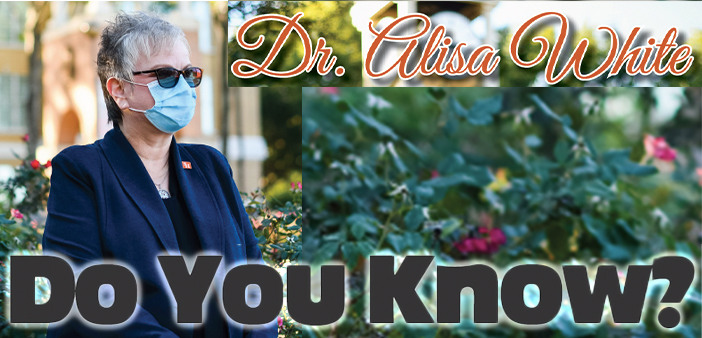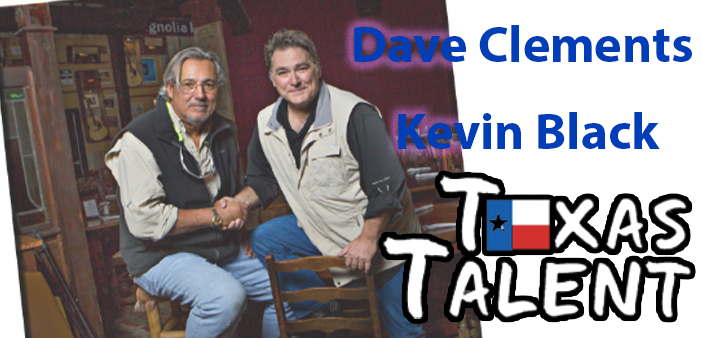The Sam Houston Memorial Museum is hosting an exhibit featuring Cynthia Ann and Quanah Parker. On display at the Walker Education Center until October 1, 2020, the exhibit features rare photos of the two historic figures, while telling the “story of two persons caught between two different worlds.”

The Parkers
In 1833, the Parkers—a clan of six families—moved to Texas, settling near what is now Groesbeck. After taking a pledge to Mexico, the families were given some 16,000 acres of land–arable, replete with game, and beautiful. But it was on the frontier, extending far beyond settlements and into Comanche Territory. Although the Parkers erected heavy fortifications, their farmland was outside the walls of Fort Parker. So, when ten of the Parker men left to work in their cornfields, inexplicably leaving the door to the fort open, the families were vulnerable. Five of the Parker clan were killed and another five captured that day. The captured included: Elizabeth Kellogg; Rachel Plummer; James Plummer; John Parker; and Cynthia Ann Parker. Within a couple of years, Plummer was bought by a white couple in Santa Fe, NM, and returned to her remaining family—who now lived in Huntsville, Texas. Much of what we know about the attack at Fort Parker is from a vivid account penned by Rachel. Much of what we know about the other captives were from accounts written (or told) by James Parker, who made an Ahab-like quest of finding his relatives. With (President) Sam Houston’s help, he was able to pay $150 in ransom money for his sister, Elizabeth. In 1842, he paid ransoms to return his nephew (James Plummer) and son (John Parker) from the Comanches.
Cynthia Ann
Cynthia Ann would remain “captive” for almost 25 years—although, for most of those years she was a willing, perhaps even a happy, Comanche captive. Indeed, she married into the tribe—possibly to one of the Comanche warriors who participated in the raid on her family’s home. Little is known about her life with the Comanches. Although there were many purported sightings of her, most are of dubious authenticity. We know she was adopted by a Comanche couple after the raid; she lost her ability to speak English, while, according Army Officer Randolph Marcy, adopting “all the habits and peculiarities of the Comanches.” Of those who did claim to see her, they agreed on this: the Comanches would not sell her and, in any case, she evinced no desire to leave her Indian home. Her name was “Nautdah,” which meant “Someone Found,” and her husband, Peta Nocona, was a Comanche Chief. She was wedded to him and their three children: Prairie Flower, Peanuts, and Quanah. Her time in the Comanche culture, however, neared its end in 1860. Throughout the year, Peta Nocona’s raids of white settlers grew more frequent, prompting Sam Houston, in one of his last directives as Governor, to appoint 23-year old Sul Ross to command a company formed to end Comanche raids. Following a Comanche raid on Parker County (named for Cynthia Ann’s uncle), the band retreated to the Pease River, near Chillicothe,

But it was his quest to find young blue-eyed Cynthia Ann that became the stuff of legend. He undertook at least eight searches for his niece—often alone, sometimes on foot—in journeys that totaled, according to historian S. C. Gwynne, at least 5,000 miles. That he survived his travels amounts to a minor miracle, and it earned him a reputation as a man with single-minded purpose (The John Wayne character in The Searchers was inspired by Parker.) Among his friends, this tenacity was admirable. Among his enemies— many of whom were erstwhile friends—his single-mindedness was an unhealthy obsession, a madness. Parker’s relationship with Sam Houston is instructive. According to Glenn Frankel, the Pulitzer Prize winning author of The Searchers: The Making of an American Legend, Parker sought Sam Houston’s assistance, requesting, “a large company of soldiers to hunt down the Indians and rescue the captives.” Although Houston initially authorized such a search, Parker’s behavior—which was often irrational—led Houston to conclude that the aggrieved patriarch was an “Indian hater and a one-man wrecking crew.” He withdrew the soldiers and the funding, arguing that a peace treaty would be more effective than an erratic and destructive search party. In this manner, Houston earned the enmity of Parker, who believed the Texas President “betrayed too great an indifference to the matter.”
Texas. Ross and his company tracked the group and, in what would have been a minor battle were it not for the presence of Cynthia Ann, emerged victorious. Although Ross exaggerated the number of Comanche warriors involved, most historians believe that there were approximately 15 Native Americans at the camp, many of them children and women. One of those woman was on horseback, with a small child, attempting to flee. When Ross’s soldiers caught up to her, she cried, “Americano.” She had blue eyes. For the second time in her life, Cynthia Ann experienced a traumatic clash between Comanche and white worlds. And for the second time, she endured a captivity of sorts in a strange culture. Although reunited with some of her Parker family and with Prairie Flower, she was separated from her husband and from her two sons: Peanuts and Quanah. She was disconcerted by her surroundings, her new dwellings, even the food she ate. She and Prairie Flower shuffled to and from the homes of different branches of the Parker family. As it became clear that Cynthia Ann did not celebrate her “rescue,” newspaper reports of her wellbeing and activities dwindled. The Parker family’s oral history suggest that Prairie Flower passed away, possibly from smallpox, before Cynthia Ann, but the dates of their passing differ by as much as a decade. The 1870 census reports Cynthia Ann as living, so reports of an 1871 passing may be the

most reliable, but as Frankel notes, “There are no newspaper accounts of her later days, no obituary for her or Prairie Flower, and no reliable way to know exactly how or when she died.”
Quanah Parker
Cynthia Ann passed away not knowing the fate of her husband or her sons, fearing they had died. And, indeed, Peanuts passed away in the early 1860s, probably the victim of disease, and Peta Nocona passed by 1864. By his late teen years, Quanah was an orphan.
Being half-white, he was also somewhat ostracized. “I was left friendless,” he recalled years later, adding that he was “often treated very cruelly,” as “orphans only of Indians are treated.”
But in a culture that rewarded courage and a martial spirit, Quanah’s fortunes soon ascended. He was a warrior by 15, and he soon grew to a height of more than six feet, probably six to eight inches taller than the typical Comanche male. S.C. Gwynne describes him as “strikingly
handsome.” Frankel describes him as “dignified, with piercing gray-blue eyes.” Jeff Guinn, whose novel Buffalo Trail features Quanah, describes him as possessing his “father’s battle skills, mahogany skin, and thick black hair, but also his mother’s gray eyes and a white man’s height.” Pictures of him, irrespective of age, show him to be a striking figure, handsome and imposing. He looked like the chief he became.
Quanah’s road to chiefdom, however, is obscure. In his years of ascendancy, numerous treaties were signed, increasingly relegating Native Americans to reservation or private homesteads. Quanah, however, resisted, and he became, according to Gwynne, “at a very young age, one of a small, select group of Comanche men who would lead the tribe’s final raiding and military expeditions in the last years of their freedom.”
But much of what is known about raids and expeditions comes from his own (perhaps imaginative) retellings. In 1867, he was present (as an observer) at the Medicine Lodge Treaty negotiations; he led raids in Texas and Mexico; and he led the disastrous Second Battle of Adobe Walls, where 28 men repelled more than 200 Comanches. A year later, Quanah and his band surrendered to Colonel Ronald Mackenzie at Fort Sill.
Shortly after the surrender, Quanah learned that his mother and sister had passed, but until the end of his life, he sought to make contact with his white relatives and to learn more of his mother.

He began to go by the name Quanah Parker, rather than just Quanah. He also served as a go-between for the US Military, convincing recalcitrant Comanches to join the reservation. But he also negotiated on behalf of the Comanches and other Native American tribes, arguing for more money, resources, amenities, and land—efforts that earned him the title, “Principal Chief of the Comanche Indians.”
Of course, Quanah used his negotiating skills to do well for himself, too. He befriended ranchers such as Charles Goodnight, cattlemen such as S. B. Burnett, and he used his friendship to sell grazing rights on more than 1,000,000 acres of Native American land—taking, of course, a middle-man cut in the process. Eventually, he would amass great wealth, allowing him to build a 19th-century mansion: the Star House.

The Comanches had been known as a fierce, even fanatical, tribe. But Quanah was a realist, and he saw the future. He learned the English language, he dressed in “white man’s clothes”—when it suited him—and he sent his children to the government’s Native American schools.
But Quanah also worked to preserve Comanche culture. He would not convert to Christianity; he wore his hair in braids; and, as Frankel notes, “he refused to abandon polygamy, arguing that it was an essential part of the Comanche way of life.” Along with his great wealth, he amassed at least seven wives, not counting the ones who left him.
In many respects, the last years of Quanah’s life were most remarkable. His rising fame coincided with a renewed interest in the life and death of his mother. Their stories, often embellished, gained currency–and their legend took hold.
He developed an alliance of sorts with Sul Ross who, in the late 1880s, became Governor of Texas—in part, based on his claim to be the man who rescued Cynthia Ann Parker. Ross sent Quanah a daguerreotype of Cynthia Ann with Prairie Flower. Quanah allowed Ross to exaggerate and twist the story of the Battle of Pease River.
He became friends with Teddy Roosevelt, who invited him to participate in his 1905 Presidential Inauguration. In return, Quanahinvited Roosevelt to his Star House, and President Roosevelt spent four days in Comanche territory, eating and sleeping outdoors. “It was,” as Roosevelt later described it, “a thoroughly enjoyable company.”
When Roosevelt returned to Washington, he signed paperwork establishing a Bison Refuge on Comanche land, and he sent 15 bison—culled from the New York Zoo—to Oklahoma, where Quanah greeted them, according to Frankel, “in full war feathers.”

In 1909, Quanah sought the help of powerful friends, and he requested that his mother’s remains be disinterred and transported to Comanche lands. After getting approval, he sent his son-in-law to find Cynthia Ann’s grave. Eventually, it was located in Anderson County, and, Cynthia Ann’s remains—along with those of Prairie Flower—were reinterred near the Star House on tribal lands.
Within a year, Quanah died, and he, too, was buried on tribal lands, near the Star House, which still stands.

Katy & E. Don Walker Education Center
1402 19th St. Huntsville, TX 77340
(936) 294-1832



